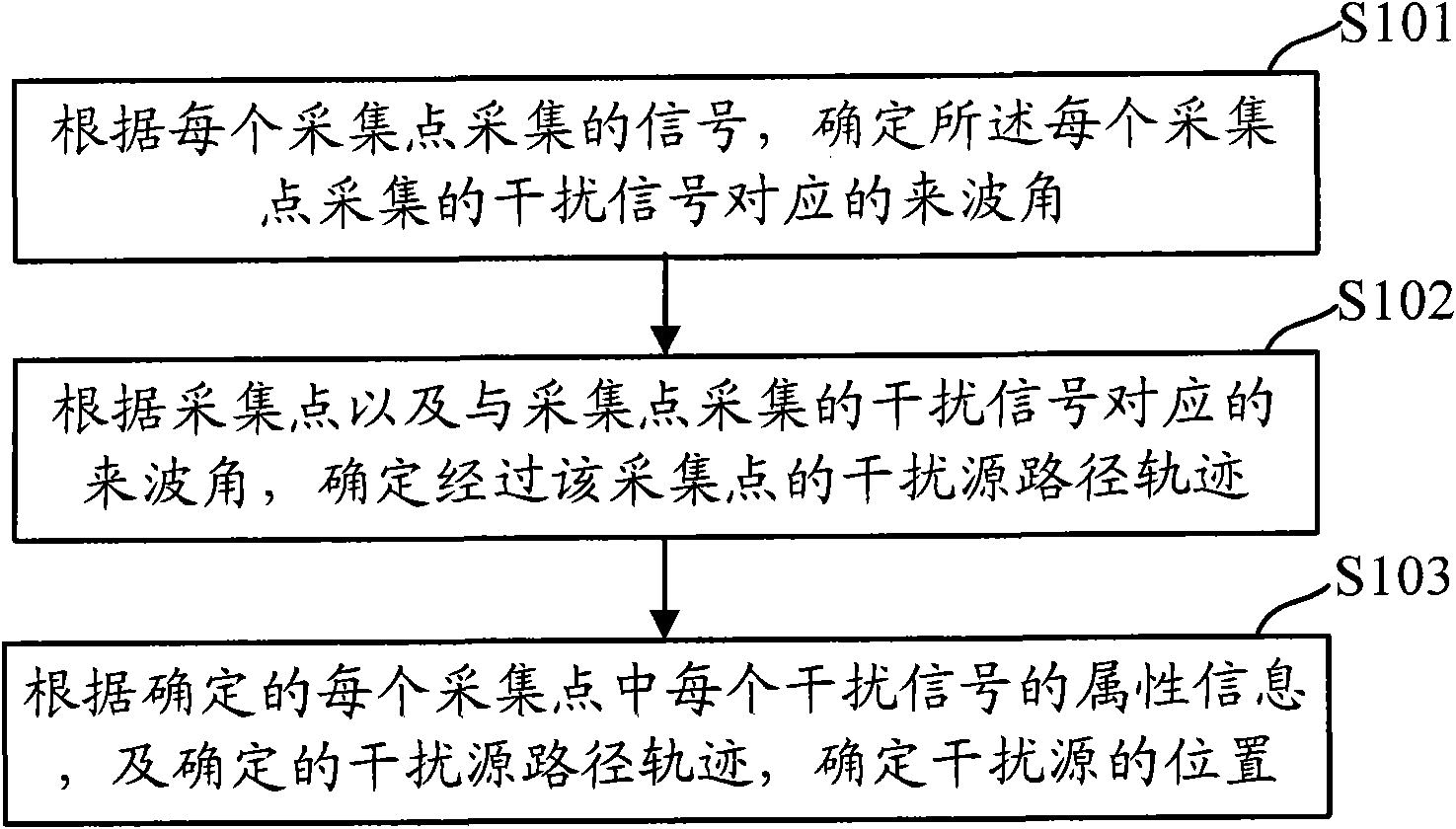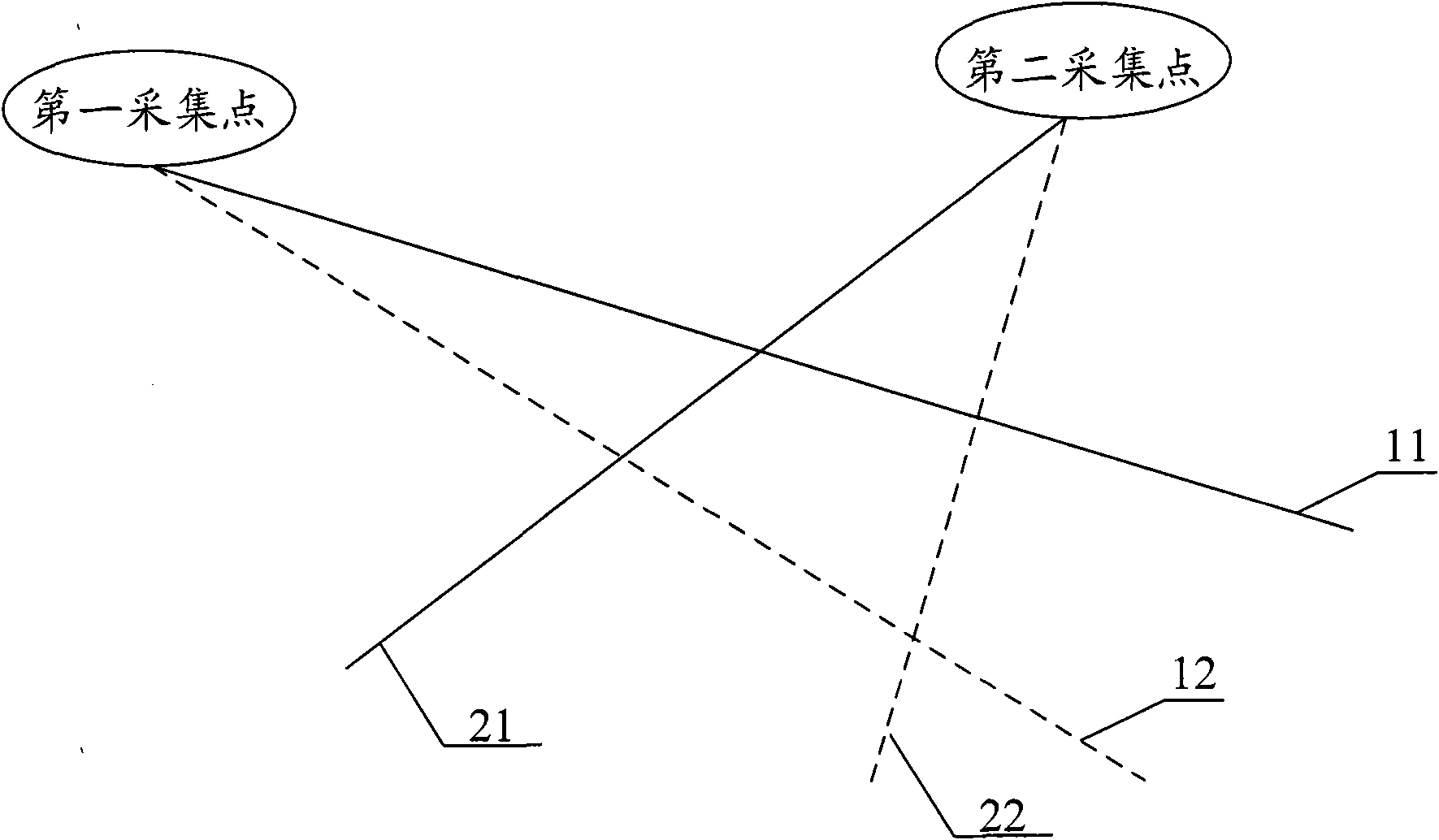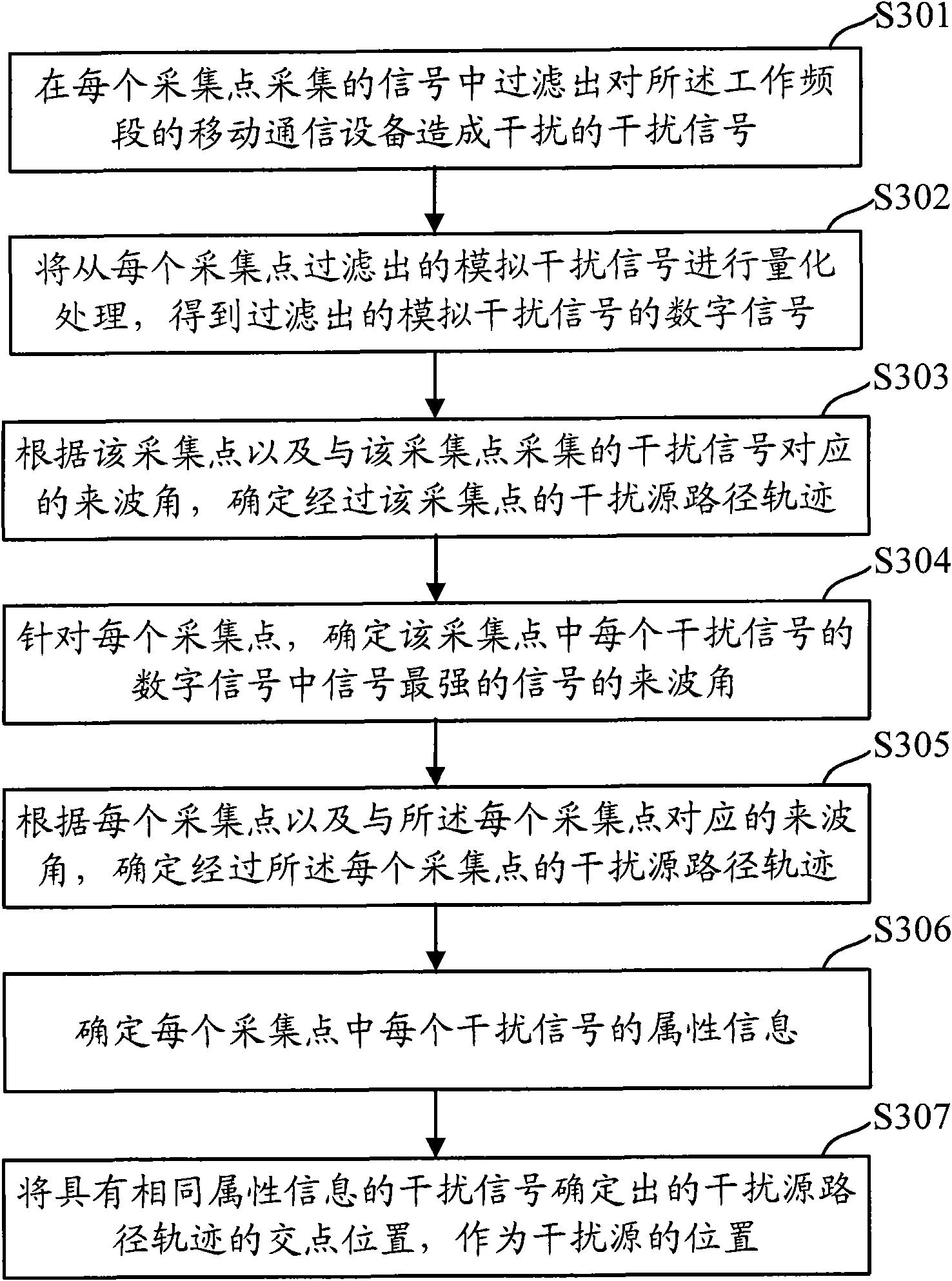Method and device for positioning interference source
A positioning method and technology of interference sources, which are applied in transmission monitoring, electrical components, transmission systems, etc., can solve problems such as low precision and poor accuracy, and achieve the effect of eliminating interference and accurate location.
- Summary
- Abstract
- Description
- Claims
- Application Information
AI Technical Summary
Problems solved by technology
Method used
Image
Examples
Embodiment Construction
[0021] In order to effectively improve the accuracy of interference source location, the embodiment of the present invention provides an interference source location method. The interference source location method includes: determining the angle of arrival corresponding to the interference signal collected at each collection point, and determining the Collecting the interference source path trajectory of the collection point, determining the attribute information of each interference signal in each collection point, and according to the determined attribute information of each interference signal in each collection point, and the determined interference source path trajectory , to determine the location of the interference source. Since the interference signals with the same attribute information may be the interference signals sent by the same interference source, in the embodiment of the present invention, the intersection point of the path trajectory determined by the angle ...
PUM
 Login to View More
Login to View More Abstract
Description
Claims
Application Information
 Login to View More
Login to View More - R&D
- Intellectual Property
- Life Sciences
- Materials
- Tech Scout
- Unparalleled Data Quality
- Higher Quality Content
- 60% Fewer Hallucinations
Browse by: Latest US Patents, China's latest patents, Technical Efficacy Thesaurus, Application Domain, Technology Topic, Popular Technical Reports.
© 2025 PatSnap. All rights reserved.Legal|Privacy policy|Modern Slavery Act Transparency Statement|Sitemap|About US| Contact US: help@patsnap.com



